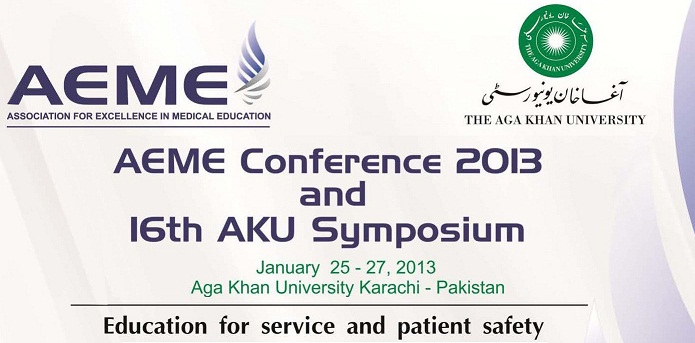Day 1 : Plenary II (Theme: Research and Technology; Enhanced learning & Simulation)
The use of simulation to enhance patient safety: challenges and opportunities
Location
AKU Auditorium
Start Date
26-1-2013 2:00 PM
Abstract
Educational Commission for Foreign Medical Graduates (ECFMG)
The use of simulation-based assessments in medicine is expanding at a rapid pace. This growth has involved numerous modalities, including computer-based case simulations, standardized patients, part-task trainers, and electromechanical mannequins. While the development of new educational programs and related assessment activities can lead to better trained practitioners, there are numerous challenges, including those associated with finances, assessment administration logistics, scenario development, scoring, standard setting, and the provision of meaningful feedback. Most important, gathering evidence to establish the link between simulation-based educational activities and patient safety can be very difficult, often demanding longitudinal research studies. This presentation will provide an overview of simulation-based assessment, concentrating on methods currently employed in the training and assessment of medical students and residents. The review of the application of simulation techniques is this arena provides guidance on how to deal with many of the challenges, especially those associated with the provision of valid and reliable scores. Knowing more about these challenges, and how to address them, will a) allow educators to develop more effective simulation-based training programs and b) provide researchers with a framework to design and conduct studies to establish clear linkages between simulation-based training (or assessment) and patient safety.
Objectives:
1. To provide an overview of the use of simulation-based assessment in medicine;
2. To outline some of the challenges associated with implementing simulation-based training and assessment;
3. To offer guidance on conducting research to show if, and how, simulation-based educational activities impact patient safety.
The use of simulation to enhance patient safety: challenges and opportunities
AKU Auditorium
Educational Commission for Foreign Medical Graduates (ECFMG)
The use of simulation-based assessments in medicine is expanding at a rapid pace. This growth has involved numerous modalities, including computer-based case simulations, standardized patients, part-task trainers, and electromechanical mannequins. While the development of new educational programs and related assessment activities can lead to better trained practitioners, there are numerous challenges, including those associated with finances, assessment administration logistics, scenario development, scoring, standard setting, and the provision of meaningful feedback. Most important, gathering evidence to establish the link between simulation-based educational activities and patient safety can be very difficult, often demanding longitudinal research studies. This presentation will provide an overview of simulation-based assessment, concentrating on methods currently employed in the training and assessment of medical students and residents. The review of the application of simulation techniques is this arena provides guidance on how to deal with many of the challenges, especially those associated with the provision of valid and reliable scores. Knowing more about these challenges, and how to address them, will a) allow educators to develop more effective simulation-based training programs and b) provide researchers with a framework to design and conduct studies to establish clear linkages between simulation-based training (or assessment) and patient safety.
Objectives:
1. To provide an overview of the use of simulation-based assessment in medicine;
2. To outline some of the challenges associated with implementing simulation-based training and assessment;
3. To offer guidance on conducting research to show if, and how, simulation-based educational activities impact patient safety.

